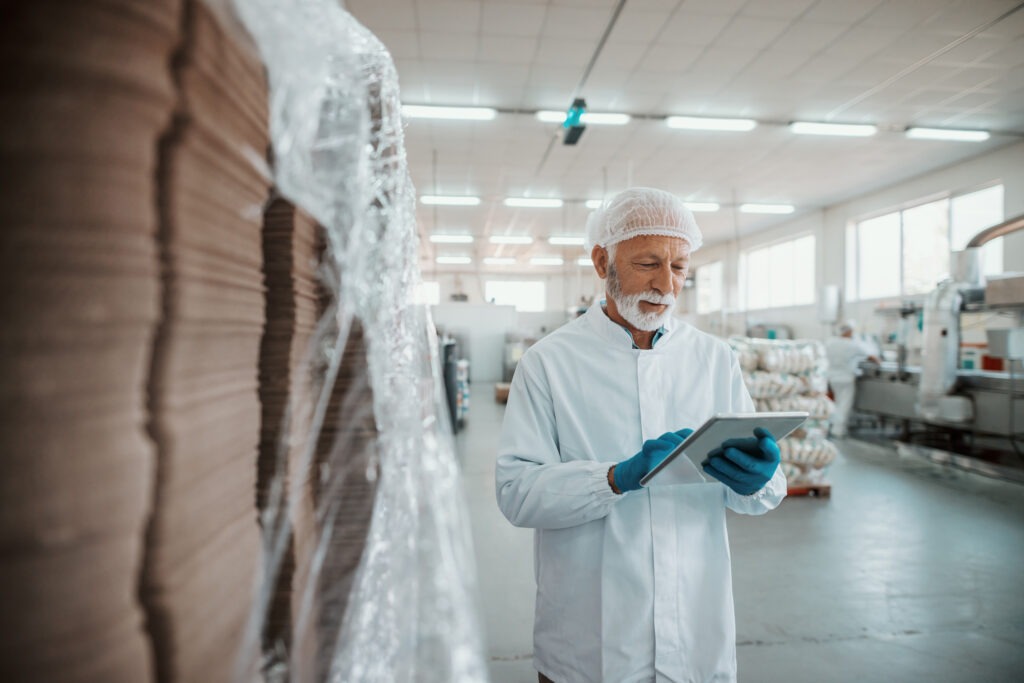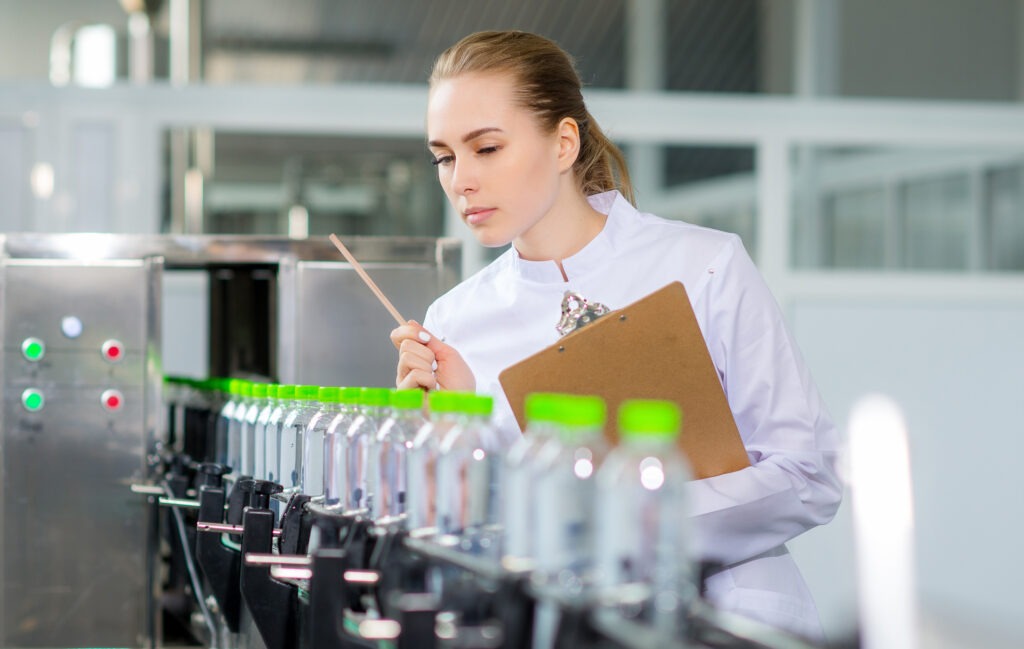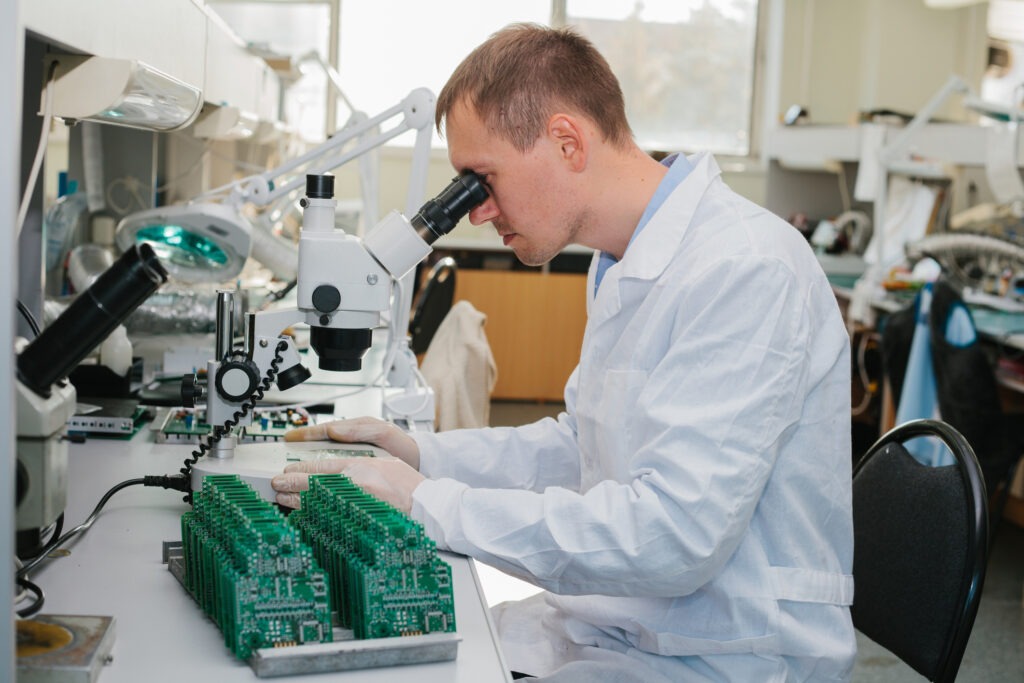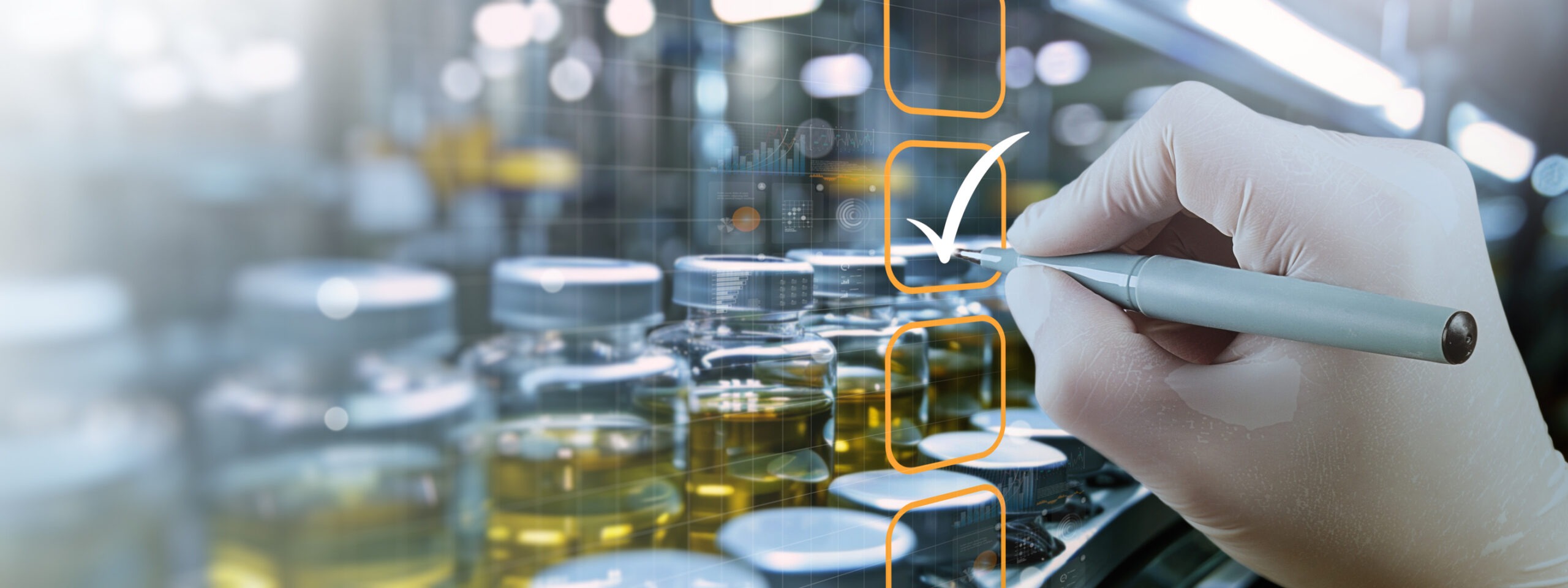How is quality control carried out?
The purpose of quality control is to ensure that the products delivered to the customer meet general quality standards and their specifications. This ensures the necessary customer satisfaction and follow-up orders.
Table of contents
- How is quality control carried out?
- What is quality control?
- What test procedures and measures do the production employees use in quality control?
- What is quality management?
- How is quality control planned?
- How do the production employees determine the test tasks?
- What does an effective quality control system look like?
- What is important for the appropriate quality control procedure?
- How do the production employees carry out the actual quality control?
Estimated reading time: 12 minutes
What is quality control?
Quality control is the summary of measures and procedures from the field of quality management. Quality inspections are used to ensure that the manufactured products correspond to what they should be. Quality control also deals with the processes required for manufacturing and production. This ensures that these also meet the standards.
As if that were not enough, quality control also serves to ensure that all processes within the company run as specified. This also includes compliance with safety regulations and legal requirements.
Quality control also serves to ensure the efficiency of production. This reduces waste, unnecessary effort and the utilisation of raw materials and time. Optimised processes can also lead to a better result in production, for example in increased quality at the same cost.
This means that quality control fulfils an important task within manufacturing and production as a whole in several respects. This is what makes it so important to carry it out correctly.
What test procedures and measures do the production employees use in quality control?
There are a number of different test procedures and quality measures that can be used to test and promote the quality of products and processes. It is important that quality control is carried out effectively and efficiently. This means that production employees must utilise the measures and procedures for their area that provide the most accurate results at the best cost. However, the result takes precedence over the costs. It is therefore more important to be precise and conscientious in quality control than to save costs. These types of inspection procedures and measures are available for this purpose:
- Random testing - Only some of the products are tested before packaging and delivery
- Complete testing - all products are tested here
- Checking the specifications - The production employees ensure that the products meet the specifications, for example in terms of dimensions
- Process analysis - The employees look at the production processes and check whether all specifications are being adhered to
- Equipment safety - The quality assurance staff check whether the work with the production equipment is safe and enables the desired result
- Regular maintenance and calibration of machines - Employees ensure that machines are maintained and adjusted according to specifications
- Training and qualification of personnel - The quality control production staff train the personnel with regard to the standards and check whether they have the necessary qualifications
- Monitoring and control of the supplier management system - employees ensure that all deliveries are made in the right quantity, the right way, and at the right time
- Analysing customer complaints and feedback - Quality control employees investigate complaints and feedback and find out whether they are substantiated
What is Quality management?
Quality management deals with the creation of quality standards and compliance with them. It therefore also includes the planning, monitoring and control of products and production processes.
This means that quality management begins by defining the basis on which quality controls are to be carried out. In other words, they determine which standards are to be achieved and how the processes must run. Then the employees in this area determine how the checks themselves are to be carried out, when they are to take place and what they are to test.
Quality management thus combines these aspects:
- Quality control planning
- The implementation of quality control
- Measures to improve quality
- Staff training
How is quality control planned?
Quality control depends on various factors that the production staff must take into account for the specific case. This includes, for example, what is to be inspected, which inspections are to be carried out, how an effective system of inspections is to be set up and which inspection procedures produce the best results.
Planning does not just take place once. Instead, it is an ongoing process. As part of quality assurance, employees also endeavour to constantly optimise their own work. This means that they improve controls and procedures in order to achieve even greater certainty with regard to finding errors and at the same time reduce costs where possible.
How do the production employees determine the test tasks?
In the end, the inspection tasks are precisely the activities that the production employees in quality assurance carry out. It is therefore important to clearly define these from the outset. This depends on the specific characteristics of the manufactured products and the production processes. It is important to achieve the best possible result for production while at the same time striving for the best possible result for control. This is a challenge in itself, but with a little experience, the production staff involved can overcome it.
For example, it is important to check the dimensions of a product whose dimensions are precisely specified by the customer. However, this usually means that it is not necessary to destroy the product during the inspection. Instead, the employees can measure the products at random. However, if it frequently happens that the dimensions do not correspond to the specifications, the employees must switch from random testing to full testing and endeavour to improve the production processes.

What does an effective quality control system look like?
An effective quality control system monitors the organisation of the control itself. It also includes the planning and implementation of the actual measures. It also includes the improvement of quality control itself.
To this end, the production employees responsible for quality control define their responsibilities. They record and document the data and the training of the employees. They then analyse the data obtained and draw their conclusions.
What is important for the appropriate quality control procedure?
The procedures used by the production staff to control quality are based on the requirements of the customer and the products. It also depends on the resources available for quality control. The selection ranges from visual inspections and the use of measuring devices to complex procedures using computers, such as computed tomography. When making a selection, it is important to ensure that the quality can be determined without going beyond the desired result and thus incurring unnecessary costs. Where a visual inspection is sufficient, employees can dispense with computed tomography. Where a visual inspection would not be able to find a defect and only a computed tomography can provide results, a visual inspection is simply not sufficient.
How do the production employees carry out the actual quality control?
For quality control, it is important to initiate the right steps, apply the appropriate methods and harmonise everything. To do this, the production employees prepare the measures, carry them out, analyse the results and initiate measures to rectify the errors.
How do the production employees in quality assurance prepare the control measures?
It is essential to make preparations for various quality control measures. If measuring instruments are to be used, they must be calibrated. This is the only way for employees to ensure that any deviations from the desired result are actually deviations in the product and not errors in the measurements. The employees who carry out the actual measurements must also be instructed in how to use the devices and how to carry out the measurements.
How do employees implement the measures?
The control measures are precisely specified for the employees responsible for them. This serves several purposes at once. Firstly, the quality control managers know exactly how the measures, for example the measurements of the dimensions, are carried out. Secondly, they can repeat the measurements in the same way as often as required and thus ensure that all products meet the same specifications. They can also adjust the measurements. For example, if deviations are not due to the product, but to the way the measurements are taken, they can improve this part of the process by finding new ways to carry out the measurements.
How do the production employees evaluate the results of the measures?
The control measures produce results. However, as long as the production employees do not analyse these results, no meaningful conclusions can be drawn. In other words, analysing the results is just as important as carrying out the control measures themselves.
The evaluation of the results takes into account the customer's specifications, legal requirements, company regulations and common sense. It is important to recognise whether the results meet, fall short of or exceed the desired standards. On this basis, the production staff define corrective measures.
How do the production employees record the results of the checks?
Production employees document their work, nowadays usually in digital form. However, it is not only important to record the results of the inspections themselves. The documentation also describes how the results were achieved. It is essential to record everything in such a way that other employees can trace it back later. This allows them to recognise whether the processes and therefore the results of the inspection were faulty or whether the deviations from the specifications were directly present in the product. In the latter case, they can repeat the control measures to ensure that the corrective actions are successful.

What is important for the corrective measures?
Quality control does not primarily look for defects, but for deviations. In other words, it checks whether the products comply with the specifications, regardless of whether these were specified by the customer, the legislator or the industrial company itself. If this is not the case, then there is first and foremost a deviation.
There are three main reasons for deviations. Either the quality target was under-fulfilled, over-fulfilled or the inspection itself was incorrect. This means that the production employees now have to determine which of the three causes is present.
If the inspection itself was not carried out correctly, the inspection processes must be optimised. For example, the control process itself must be tested on known products whose correctness has been confirmed. This can then be adapted until it produces the confirmed result.
If the quality target has been exceeded, this does not necessarily mean that the result is good. Sure, the customer may be happy about it, but they may not be so happy either. The same applies to your own company. The reason for this is that quality and costs are directly related. Quality that is too high also means higher than necessary costs. This may annoy the customer, who could have achieved a better price, or the company's own management, because lower costs for the same price mean higher profits. Therefore, the production staff must now initiate corrective measures to ensure that quality is reduced to the required level.
If the quality target has not been met, the manufactured products cannot be delivered. They are now rejects and have caused unnecessary costs for the company. The production staff must therefore now ensure that the manufacturing processes, raw materials or other inputs are changed so that the end products meet the quality targets.
Conclusion
Quality control is an important part of production. It is the only way to guarantee that your own company ultimately delivers the right products to the customer in accordance with all specifications. It allows defects to be found, identified and rectified. This ensures the necessary customer satisfaction and follow-up orders. In other words, it determines the success or failure of the company.
Similar topics



